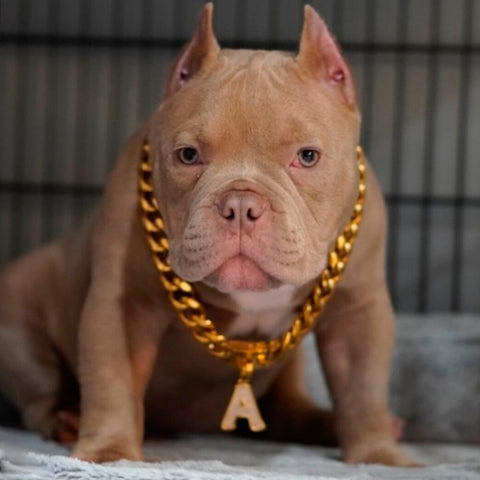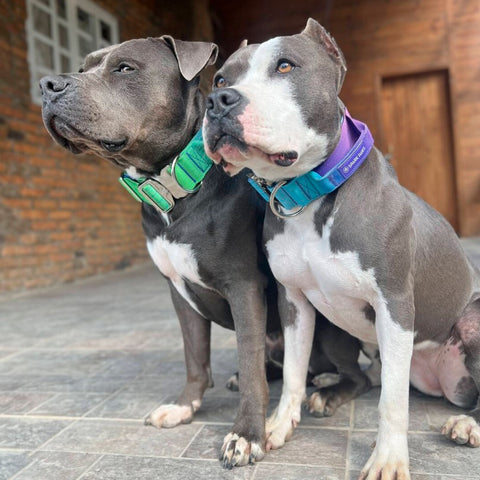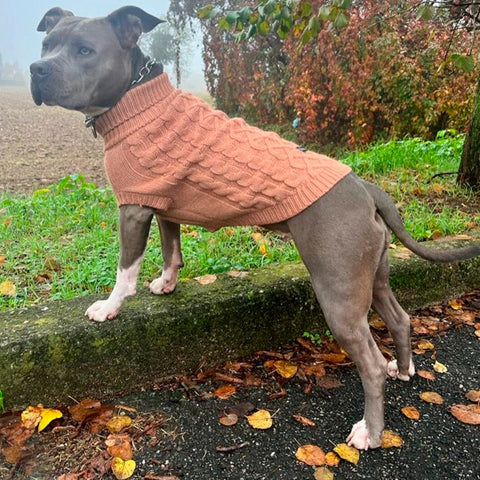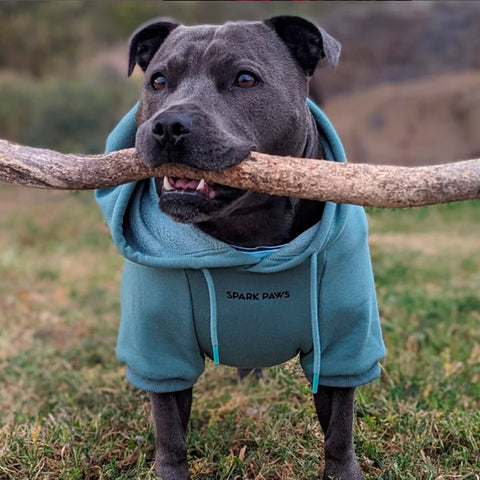Uncovering the Rich Heritage of Pitbull Bloodlines: History, Traits, and Selection
When it comes to the realm of dog lovers, few breeds stir up as much passion as the misunderstood Pitbull. Despite the stereotypes, Pitbulls are celebrated for their strength, loyalty, and heart, with each Pitbull bloodline revealing its unique narrative.
We will uncover the rich history, and distinct characteristics, and help you understand how to choose the best bloodline for your needs. So, whether you're a seasoned Pitbull owner or considering adding one to your family, let's explore the world of these remarkable breeds.
The Difference between Pitbull Breed and Bloodline
Before we embark on our exploration of individual bloodlines, it's essential to discern the difference between breed and bloodline. A dog breed, such as the American Pit Bull Terrier, is a distinct type with specific physical and behavioural standards that may be considered a purebred pitbull.
A bloodline, however, is the record of a dog's lineage, encompassing their parents, grandparents, and great-grandparents, weaving a narrative of their ancestral journey.
The Story of Pitbull Lineage
Pitbulls, with their diverse genetic tapestry, offer a plethora of bloodlines, each with a storied past and intricate characteristics. Let's look at some of the most prominent:
1. Colby Pitbull Bloodline
One of the most popular, these dogs date back to 1889, crafted by a breeder named John Colby. Colby Pitbulls are among America’s oldest with a lineage that includes both Irish and English dogs, known for their muscular build, and friendly demeanor, making them excellent family dogs.
2. Old Family Red Nose Pitbulls: A Touch of Irish
Further exploring other popular pitbull bloodlines, the Old Family Red Nose Pitbull stands out with its distinct red coat and powerful frame. Hailing from Ireland, the family red nose bloodline embodies strength and has been an agile guard dog through generations.
3. Razor's Edge Pitbulls: The Gentle Giants
The Razor's Edge Pitbulls might have a fierce name but are revered for their gentle nature. Part of the American Bully breed, they are some of the great family dogs, known for their loyalty and mild temperament.
Keep your gentle giant cozy and stylish with our range of Sparkpaws Dog Pajama Onesies, perfect for the mild temperament of a Razor's Edge Pitbull.
 Sparkpaws Dog Jewelry Charm Tag
Sparkpaws Dog Jewelry Charm Tag
4. Jeep Bloodline
The lineage of the Jeep bloodline began with the celebrated Pitbull known as Crenshaw's Jeep, a famous pitbull, born in 1976. While never officially recognized as such, Crenshaw’s Jeep gained a legendary reputation as an exceptional fighter and went on to father numerous champion dogs, establishing a robust bloodline.
Jeep descendants are characterized by their notably deep-set eyes, smaller than what you might see in the average Pitbull. They possess a muscular build, a nod to their forebear's combative legacy, and feature a broad rib cage. This distinct barrel chest is emblematic of the Jeep bloodline, complementing their strong and pronounced forearms.
A unique trait of Jeep bloodline dogs is their lengthy tails, setting them apart from other bully breeds where shorter tails are more common. While their coats might not possess the high gloss of some Pitbull bloodlines, they do have an understated glossy finish that is characteristic of the lineage.
5. The Ruffian Bloodline
Originating from the champion dog known as The Ruffian, the Ruffian bloodline owes its existence to the diligent efforts of Clayton Harriman and William Whitaker. These founders devoted themselves to cultivating the champions that would continue this esteemed lineage.
Dogs belonging to the Ruffian bloodline are distinguished by their compact, pointed ears and abbreviated tails. They boast a well-groomed, sleek coat atop a well-defined muscular structure, traits that render them particularly suited for the show ring.
6. Carver Pitbull
The Carver bloodline commands significant respect and popularity among Bully breed enthusiasts, with many other pitbull bloodlines tracing their roots back to Carver ancestors. Pure Carver bloodline dogs are increasingly rare, given the widespread integration of their lineage into the development of various new bloodlines.
When it comes to the realm of bully breeds, the Carver bloodline is remarkably versatile. Some members of the Carver lineage are celebrated for their docile and friendly temperaments, while others carry a legacy marked by their history in the fighting arena. The Carver bloodline serves as a foundational pillar within the Pitbull community, with its diverse traits being a touchstone for almost every existing Pitbull bloodline today.
7. Gator Pitbull Bloodline
Enthusiasts of the breed often consider the Gator Mouth Pitbulls, also known as Gator Pitbulls, to be a bloodline that has faded into history. These dogs are the direct progeny of the famed champions known as Gator and Alligator, originally bred for the now-outlawed practice of dog fighting.
With the criminalization of dogfighting, the pure Gator Pitbull line is believed to have all but disappeared. Those in search of this particular lineage should exercise due diligence, seeking out a kennel that is not only reputable but also committed to ethical breeding and sales practices.
Exercise caution when encountering backyard breeders who assert possession of this bloodline. It is essential to request and review a Certificate of Bloodline to verify the claim's authenticity to ensure that one is engaging with a genuine, responsibly managed lineage.
 Courtesy of InspireUplift
Courtesy of InspireUplift
8. The Monster G Bloodline
Emerged in the 1980s, originating from Los Angeles, California, named after its founder, Monster G. This lineage has maintained its presence and continues to be well-regarded in California's Pitbull community to this day. Because of its longstanding reputation and popularity, acquiring a Monster G Pitbull is often considered a significant investment.
Pitbulls from the Monster G bloodline are genetically linked to the Greyline strand, which is reflected in their physical appearance and temperament. These dogs are characterized by their athletic build and friendly demeanor, qualities that they share with the Greyline lineage. Consequently, Monster G Pitbulls are celebrated for their combination of strength, sociability, and distinctive traits that are emblematic of their heritage.
Brief History of Pitbull Dog Breeds
The history of Pitbull-type dogs can be traced back to the early 19th century in the United Kingdom.
The ancestors of modern Pitbulls were created in England, Ireland, and Scotland by crossing old types of Bulldogs with terriers, where the bloodline originated. Bulldogs at the time were large, fierce, and courageous dogs used in a cruel sport known as bull-baiting, where the dogs were used to bait and attack bulls until the sport was banned in 1835. Once bull-baiting was outlawed, enthusiasts of the sport sought other forms of entertainment, and thus the practice of dog fighting emerged. The goal in creating the Pitbull breeds was to combine the strength and demeanor of the Bulldog with the agility, tenacity, and spirit of the terrier.
These new crossbreeds proved to be effective fighters in the dog-fighting pits, which led to the unfortunate name Pit Bull or Pitbull. The dogs were trained to fight until one could no longer continue or concede. Despite the brutal history associated with their early use, these dogs were also known for their loyalty and gentleness towards humans, a trait that was encouraged as handlers had to be able to enter the fighting pits without being attacked.
In the late 1800s and early 1900s, immigrants from the British Isles brought these dogs to the United States, where they quickly became popular as family pets, farm dogs, and working dogs. They were Americanized as the American Pit Bull Terrier and recognized by the United Kennel Club (UKC) in 1898. The American Kennel Club (AKC), however, chose to recognize a slightly different variety as the American Staffordshire Terrier in 1936, primarily to distance the breed from its fighting origins.
Despite their early use in blood sports, Pitbull-type dogs have worked in a variety of roles, including as catch dogs for semi-wild cattle and hogs, as hunters, and as family companions. They became a symbol of American pride and were used in military propaganda during World War I and World War II.
The term Pitbull has since become a controversial one due to the breed's association with dog fighting and aggressive behavior propagated by irresponsible ownership and sensationalist media reporting. However, advocates for the breed stress that, with responsible breeding, training, and socialization, Pitbulls can be very friendly, loyal, and affectionate pets. Many Pitbulls are therapy dogs, service dogs, and beloved family members. It's important not to stereotype breeds but instead evaluate individual dogs by their behavior and ensure responsible ownership.(1)
How to Determine Your Pitbulls Bloodline
 Colby pitbull image credit: bubblypet.com
Colby pitbull image credit: bubblypet.com
Are you wondering about your own dog's heritage? To determine your Pitbulls bloodline, consider the following steps:
-
Documentation and Official Records:
Check for registration documents, and acquire your Pitbull's official registration from a recognized body like the American Kennel Club (AKC). Your dog's registration ID is crucial. (2)
Utilize the registration ID to reach out to the AKC or visit genealogy websites like Pedigree Online to request your Pitbull's ancestral records. The AKC typically issues ancestry details spanning four to five generations.
-
Analyzing the Pedigree:
Study the pedigree to trace your Pitbull's heritage, which will disclose forebear names, specific lineages, and any distinguished canines in the progeny.
Search for renowned lineages and identify prominent strains such as Colby, Old Family Red Nose, Razor’s Edge, or Gator Mouth within your dog’s pedigree.
-
Expert Advice and Community Engagement:
Engage with professional Pitbull breeders, who usually possess a wealth of knowledge about various bloodlines and can offer advice.
Take part in dog exhibitions, functions, or Pitbull gatherings to mingle with aficionados and gain deeper insight into distinct lineages.
Understanding your Pitbull’s ancestry can enlighten you about its character, physical characteristics, and potential health concerns. Adhering to conscientious breeding standards and supporting reputable breeders are essential for the integrity and advancement of Pitbull bloodlines.
Did you know?
Four different commonly recognized breeds fall into the Pitbull category.
The term Pitbull is often used to refer to several breeds of dogs with similar characteristics and lineage, typically including the American Pit Bull Terrier, the Staffordshire Bull Terrier, the American Staffordshire Terrier, and sometimes the American Bully.
-
American Bully:
Bred for their companionship and wider build, they are part of the modern popular bully bloodlines.
-
American PitBull Terrier:
The classic representation of the Pitbull breed, known for their determination and strength.
-
American Staffordshire Terrier:
Sharing lineage with the Pit Bull, they have been an American Staffordshire staple.
-
Staffordshire Bull Terrier:
Compact and strong, they require early socialization and training to bring out their best.
Choosing the Right Pitbull Bloodline
 Sparkpaws Comfort Control Dog Collars
Sparkpaws Comfort Control Dog Collars
Now that you're familiar with the different bloodlines, what should you consider when choosing a pit bull? It's about more than just the bloodline certification or the shiny coat—it's about finding a pup that matches your lifestyle and understanding the responsibility that comes with such a powerful and loving breed.
To ensure safe walks and better control also check out our No-pull Dog Harness, designed for your powerful and loving Pitbull breed.
FAQ’s
What are the oldest pit bull bloodlines?
X-Pert Bloodline:
The X-Pert pitbull bloodline is one of the oldest American Staffordshire bloodlines.
It was started in 1930 by breeders Clifford and Alberta Ormsby.
Known for their power, strength, and agility, X-Pert dogs have left a lasting legacy among American Staffordshire Terrier enthusiasts.
Ruffian Bloodline:
The Ruffian bloodline is a distinguished lineage within the American Staffordshire Terrier breed. It traces its origins back to the remarkable dog, “Howard’s Ruffian.”
These dogs have contributed significantly to the development of the breed we know today.
What are the most popular pitbull bloodlines?
- The Colby bloodline,
- the Old Family Red Nose Pitbull and,
- The Razor’s Edge Pitbull.
Which pitbull bloodline is the best champion show dog?
When it comes to championing show dogs, the concept of a “best” bloodline can vary based on personal preferences, breed standards, and individual dogs. However, some bloodlines have consistently produced successful show dogs. Here are a few notable ones:
- The Colby and,
- the Razor’s Edge and,
-
The Monster G
Remember that success in the show ring depends on various factors, including training, grooming, handling, and the individual dog’s personality. Each bloodline has its strengths, and the “best” one ultimately depends on your preferences and goals.
Conclusion
The world of Pitbull bloodlines is as diverse as it is fascinating, each with its own history and characteristics that contribute to the rich tapestry of the breed. From the loyal and muscular Colby to the gentle Razor's Edge, and the rare purebred Carver, these bloodlines offer a variety of traits that cater to different preferences and lifestyles.
Understanding the heritage and qualities of each bloodline is crucial for prospective owners to make informed decisions that align with their needs and ensure the well-being of these remarkable dogs. As we continue to appreciate and learn about Pitbulls, it is important to advocate for responsible breeding practices and remember that each dog, regardless of its bloodline, deserves a loving home where its virtues as a loyal companion can truly shine.


 Sparkpaws Dog Hoodie
Sparkpaws Dog Hoodie